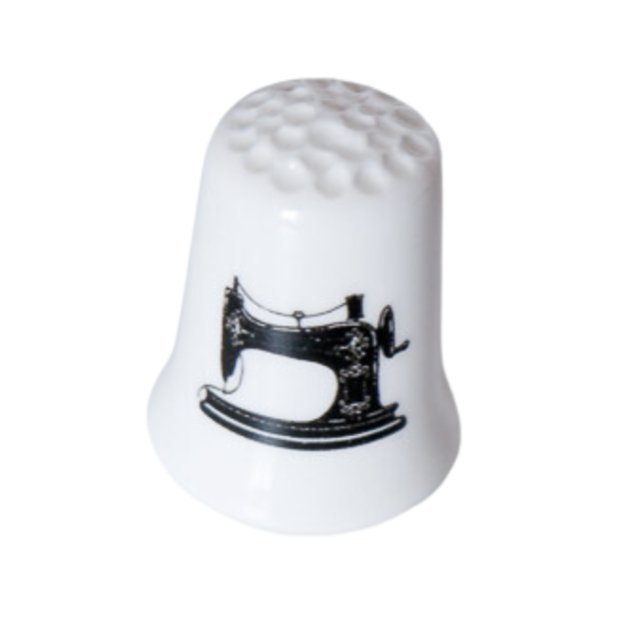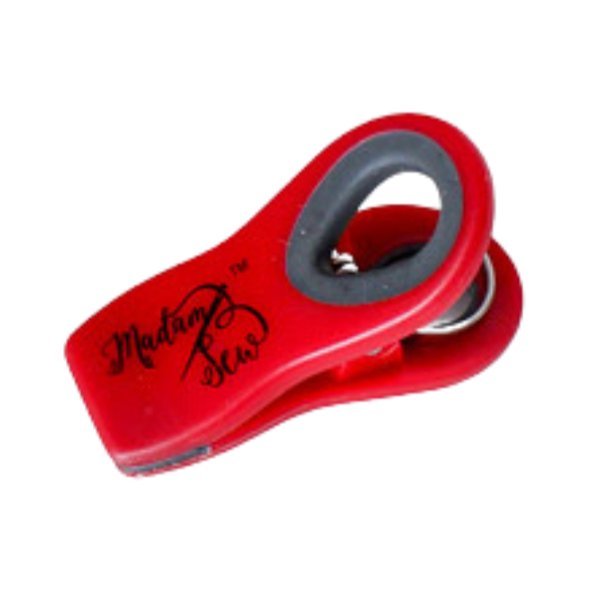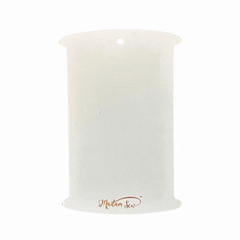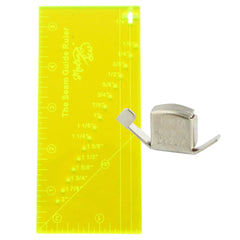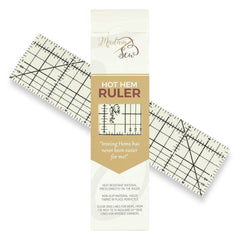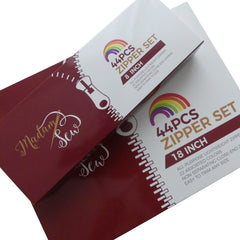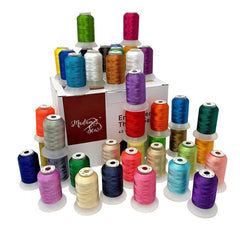Satin Bonnet Tutorial: Perfect for Nighttime Hair Protection
If you're tired of waking up with frizzy hair or your store-bought bonnet slipping off at night, this easy bonnet tutorial is for you. This adjustable hair bonnet is made with just two fabric circles and a long fabric strap and best of all, it stays on all night and, with the right fabric, it looks stylish enough to wear during the day… or not? I might have chosen the wrong fabric for the outer fabric, making it look a bit like something a cook would wear? What do you think?
Anyway, whether you're protecting curls, coils, or straightened hair, satin or silk are good for your hair. They are both smooth fabrics, gentle, and help reduce breakage and moisture loss when you are asleep.
Let’s walk through how to sew your own bonnet step-by-step.
What You'll Need
-
2 pieces of fabric, each 24 x 24 inches, this is the size for a standard to large head or if you have a lot of hair. As you can see in the images the result is rather ‘roomy’!
- Inner layer: satin or silk (satin is cheaper and very good for protecting your hair)
- Outer layer: satin or cotton, depending on the look you want. I’m using a striped cotton
- 1 long strip of fabric (matches the outer fabric) 6 ½ inches wide and 60-70 inches long. I assembled two strips, each 30 inches, as my fabric was too short for one long strip. This way the seam is in the middle. This also means that it is right on your forehead. If you don’t want that you can make sure the middle piece is the length of your head circumference and add two strips at each side.
-
Coordinating thread
-
Scissors or a rotary cutter
-
Measuring tape and/or a ruler
-
Pins or clips
-
Sewing machine and iron
Optional: a Body self measuring tape, a sewing stiletto, a magnetic seam guide
Why are Silk and Satin Best for Your Hair
Both satin and silk reduce friction and prevent moisture loss, which are key to maintaining healthy natural hair, curls, or silk presses. Unlike cotton, which absorbs moisture and causes tangling, satin glides over your hair strands, reducing breakage and frizz.
Step 1: Cut Two Fabric Circles
1. Fold each 24 x 24 inch fabric square into quarters.
2. The folded corner (where all folds meet) is your center point.
3. Use a measuring tape or ruler and temporary fabric marker to mark a 12-inch radius from the center, all the way around, forming a curve. Start with one fabric piece. I noticed it is not easy to do an exact 12 inch radius with a 24 inch fabric square. If you cut very exact, it is possible, to be safe, cut your square a bit bigger or make the radius 11 ¾ inch.
-
-
You can size up to 15 inches or down to 10 inches, depending on your head size and hair volume. The 24 by 24 inches is large enough for 11 ¾ inches. You have to increase the side of the fabric square if you need anything larger.
-
4. Cut along the marked curved line.
5. Repeat with the other fabric piece or trace your first circle to copy it on your second piece of fabric.
Step 2: Create the Back Cutout
1. Layer both circles right sides together.
2. Fold the stacked circles in half and pin the corner to keep the fold in place.
3. From the fold corner:
-
- Mark 3½ inches along the fold.
- Mark 3 inches along the curved edge.
- Connect the two marks with a gentle curved line.
4. Cut along the line to create a semi-circular cutout.
5. Unfold the circles and pin around the cutout edge.
6. Sew the cutout with ½-inch seam allowance. Using a magnetic seam guide to keep a consistent seam allowance sound this curved edge.
7. Clip notches along the curve to relax the fabric, turn right side out, and press the seam flat. This cute mini iron will soon be added to the MadamSew.com store!
Step 3: Gather the Circle Edge
1. Pin around the edge of the full circle, on the right side, avoiding the cutout seam.
2. Use your machine’s longest stitch to sew ⅜ inch from the edge, all around. I put my stitch length at 5. Don’t backstitch at the start or the end...
3. Gently pull the bobbin threads to gather the fabric evenly. The bobbin thread on my bonnet is the blue one.
4. Keep gathering until the full edge (excluding the back cutout) measures your head circumference (usually 20–22 inches). I’m on the larger end of the spectrum with 23 inches. I love that I have the MadamSew body self measuring tape to measure my head circumference…easy peasy!
5. Tie knots in the thread ends and trim these threads. Spread the gathers out evenly.
Step 4: Make the Headband Strap
1. Cut a strip of outer fabric:
-
60 inches long (you can also attach 2 pieces of 30 inches)
- 6½ inches wide (for a luxurious bow) or 3½ inches wide (for a slimmer look)
2. Fold the strip in half lengthwise, wrong sides together and press.
3. Trim each short end into a point (like a triangle).
4. Mark the center of the strip. From the center, mark your head circumference evenly (e.g., 10½ inches to the left and right for a 21-inch head). My head is 23 inches so I’m marking at 11.5 inches on each side of my center, where I have a seam as well.
5. Pin from both ends to the markings, leaving the center section (23 inches in my case) open.
6. Sew from each tip to the marking with ½-inch seam allowance. Backstitch at the markings. You can use a magnetic seam guide which makes keeping a consistent seam allowance accurate and easy, no extra markings or ironing creases to keep a straight line.
7. Turn the strap right side out. I’m using my stiletto aka the MadamSew Magic Wand to push out the corners.
8. Press the strip. Make sure the tips are flat and you iron the raw edges of the ‘open section’ (the part of the strip that isn’t sewn yet) inward.
Step 5: Attach the Strap to the Bonnet
1. Find and mark the center of the gathered bonnet edge. I used a little red pin.
2. Line this up with the center of the strap’s open section with pins, right side of the strip facing the right side of the lining. Align the stitching of the gathers with the crease you’ve sewn and use a lot of pins to pin the bonnet to the strap all around. .
3. Sew one side of the strap to the bonnet by stitching in the crease.
4. Wrap the other edge around the gathers, on the right side of the bonnet. Pin generously to keep everything in place.
5. Sew on the edge of the folded line.
You can do steps 2-5 in one step, pinning both ends of the strap around the gathers (like a sandwich) and sewing through all 3 layers at once, making sure the edges are nicely tucked in, but I know I will miss some parts if I do that.
💡 How to Wear Your Satin Bonnet
You can wear this bonnet multiple ways. First, put the bonnet on your head with the strap ends at the back. Then either, tie the long straps at the back of your head for a secure nighttime fit or bring the ties forward for a chic bow at the front, cute enough for lounging or running errands, depending on the fabric that you chose. Mine feels a bit too ‘nightime’-like or cook-like to wear on the street :-)
Final Thoughts
Now you’ve made your own satin hair bonnet that’s comfortable, protective, and stays on while you sleep! This DIY is beginner-friendly and highly customizable—you can use different colors, patterns, or even add lace for a luxe upgrade.
Looking for more cool sewing projects? Subscribe to the blog for more DIY accessories and other sewing tutorials and free patterns that fit your lifestyle.
Happy Sewing!
An
Blogging for MadamSew.com









